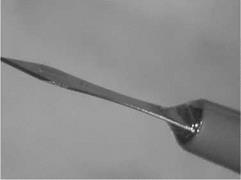Each application will be different and the selection of the adhesive will depend on all of the factors given above and probably many more. Engineers will have their own ‘favourites’ based on their own experiences and this small section is intended only as a very general overview of five different adhesive types.
For clear plastics where optical clarity and speed of cure are essential, the UV adhesives are an obvious first choice. However, these products are amongst the higher cost adhesives and curing equipment is required.
Epoxies will fill large gaps and can show excellent durability but dispensing of small quantities (<0.1 g) can be difficult if the volume dispensed is not sufficient to displace the quantity pre-mixed in the dispensing nozzle during the cure time of the adhesive.
Cyanoacrylates are often the first choice for the bonding of elastomers, especially where the application is essentially non-structural. For the bonding of small, coloured- plastic assemblies, cyanoacrylates also show excellent adhesion (Figure 7.2).
Two-part acrylics will bond many different materials and can tolerate a wider variation in mix ratios than epoxies. They can show good toughness and clarity but often have a higher odour than many of the other adhesive families.
|
|
The low-energy plastics always represent a bonding challenge and these are discussed in Section 6.3.
For optimum flexibility and high-temperature performance the silicone adhesives are outstanding but they are slow curing and generally relatively high in viscosity. Recent introductions include two-part silicones that can overcome the slow cure issue.
 2 декабря, 2015
2 декабря, 2015  Pokraskin
Pokraskin 
 Опубликовано в рубрике
Опубликовано в рубрике 